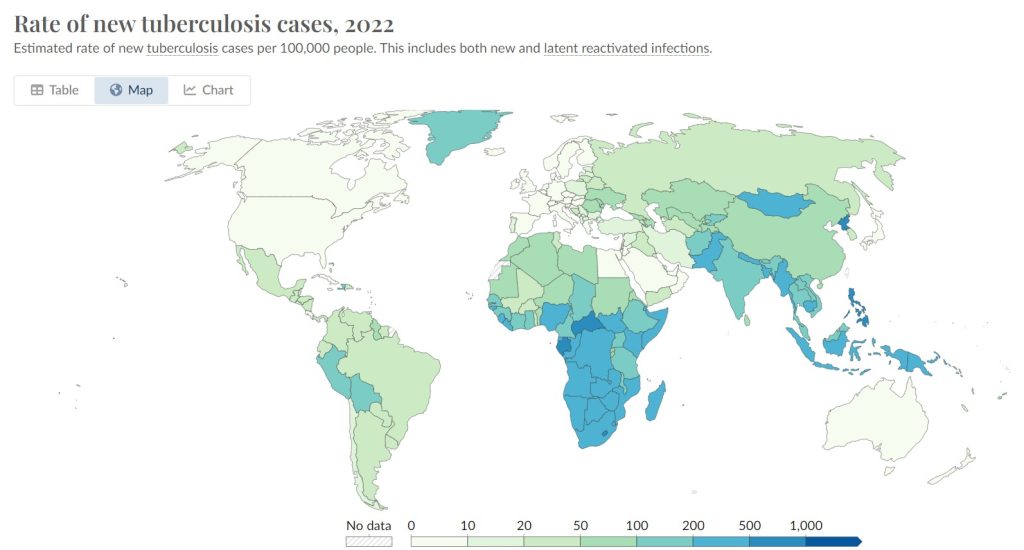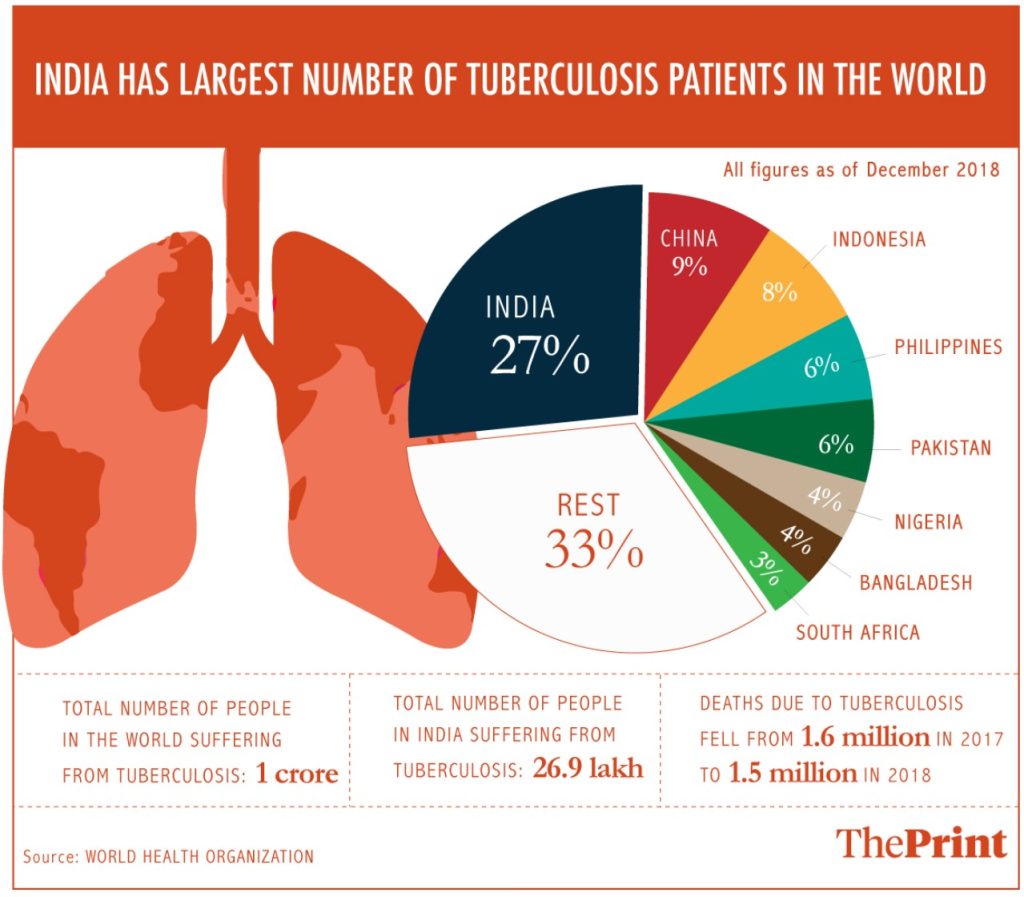CONTENTS
- On the National Human Rights Commission’s Status Deferral
- The Challenge of Extra-Pulmonary TB
On the National Human Rights Commission’s Status Deferral
Context:
The National Human Rights Commission of India (NHRC) received official notice late last week that its deferred status would persist for another year. The deferral, initially imposed by the sub-committee on accreditation (SCA) of the Global Alliance of National Human Rights Institutions (GANHRI) for a year starting in 2023, remains in effect. Despite the rejection of appeals by prominent international non-governmental organizations to categorize the NHRC under ‘B’, the SCA also declined India’s request to lift the deferral.
Relevance:
GS2- Statutory Bodies, Government Policies & Interventions
Mains Question:
What significance does an accreditation by the Global Alliance of National Human Rights Institutions hold for the National Human Rights Commission (NHRC)? Also discuss India’s way forward approach in dealing with the deferral. (15 Marks, 250 Words).
The Global Alliance of National Human Rights Institutions:
- Since its inception in 1993, GANHRI, previously referred to as the International Coordinating Committee of National Institutions for the promotion and protection of human rights (ICC), has earned recognition and trust as a valued partner of the United Nations.
- Renamed as the Global Alliance of National Human Rights Institutions in 2016, it operates as a member-based network organization, bringing together National Human Rights Institutions (NHRIs) from across the globe.
- With 120 member institutions, including India, GANHRI’s secretariat is based in Geneva, Switzerland.
National Human Rights Commission (NHRC):
- The National Human Rights Commission (NHRC) of India, established on October 12, 1993, under the Protection of Human Rights Act, 1993, amended in 2006, serves as the guardian of human rights in the country, encompassing rights related to life, liberty, equality, and dignity as guaranteed by the Indian Constitution or international covenants enforceable by Indian courts.
- Conforming to the Paris Principles adopted in October 1991, the NHRC of India consists of a multi-member body, including a chairperson, five full-time members, and seven deemed members.
- The chairperson and members are appointed by the President based on recommendations from a six-member committee chaired by the Prime Minister, with specified tenures of three years or until reaching the age of 70.
- Removal from office can only occur on charges of proven misbehavior or incapacity, following an inquiry conducted by a Supreme Court Judge.
- Additionally, the commission is organized into five specialized divisions: Law, Investigation, Policy Research & Programs, Training, and Administration.
‘Human Rights 75’:
- The NHRC brochure ‘Human Rights 75‘ offers insights into the NHRC perspective on human rights. Published as part of the ‘Azadi ka Amrit Mahotsav‘ celebrations, the document explores India’s ancient civilizations’ contributions to fundamental human rights principles.
- It highlights texts like the Vedas and the Upanishads, which encouraged the pursuit of spiritual truths. Additionally, it acknowledges ancient Indian literature’s emphasis on justice and fairness, citing the Manusmriti as an example.
- While acknowledging the Manusmriti’s reflection of social norms of its time and its principles of justice, including proportional punishment, the brochure sparked controversy among many historically disadvantaged Indians. They perceive the Manusmriti as a source of discrimination and violence they’ve endured.
- Its inclusion in an NHRC document, despite disclaimers, is deemed offensive to them and to those committed to upholding the Indian Constitution. Clarity on this matter would be beneficial. It’s notable that the foundational values of the Indian Constitution are diametrically opposed to the Manusmriti’s basic tenets.
Moving away from the Paris Principles?
- Undoubtedly, the GANHRI’s decision was not prompted by the mention of the Manusmriti but rather by concerns that India has deviated from the Paris Principles.
- In early 2017, the NHRC was initially placed in the deferral category by the SCA, though it was subsequently reinstated later that year following a review, allowing India to maintain its ‘A’ status.
- During that review, the NHRC emphasized the significance of ‘A’ status accreditation, highlighting its role in enabling participation in GANHRI activities, as well as engagement with the Human Rights Council and other UN mechanisms.
- Regarding the Paris Principles, the NHRC underscored their importance, noting that they serve as international benchmarks for accrediting National Human Rights Institutions (NHRIs).
- Adopted by the UN in 1993, the Paris Principles delineate six key criteria NHRIs are expected to fulfill: Mandate and competence, Autonomy from Government, Independence guaranteed by a Statute or Constitution, Pluralism, Adequate Resources, and Adequate powers of investigations.
- The GANHRI previously deemed the NHRC of India compatible with these criteria, thereby granting it ‘A’ status. However, current doubts persist within the GANHRI regarding India’s adherence to these principles.
- This evaluation is subject to peer review within the GANHRI, meaning it cannot be disregarded, despite the government’s dismissal of any critiques of India’s human rights situation since 2019.
- Particularly, the External Affairs Minister has been particularly attuned to accusations of the government’s failure to uphold civil liberties and fundamental freedoms. In response to such criticisms, he has often highlighted shortcomings in Western countries on similar fronts, earning praise domestically for his stance.
- While criticisms of the West for politicizing human rights are valid, the diplomatic approach need not be confrontational. Assertiveness should rely on logical and reasoned arguments, acknowledging that India, like all nations, is not flawless. However, such nuanced approaches may be perceived as weak in today’s assertive political climate.
Conclusion:
It remains uncertain whether the External Affairs Minister assertive approach was mirrored by the NHRC in its dealings with the SCA. If so, its lack of success is evident from the ongoing deferral. Yet, a more significant concern lies in the government’s stance towards the NHRC, raising doubts due to the nature of appointments and persistent vacancies within the institution. Ultimately, the NHRC itself must engage in introspection regarding its role and actions.
The Challenge of Extra-Pulmonary TB
Context:
While pulmonary tuberculosis (TB), affecting the lungs, is the most common form, approximately 20% of TB cases manifest in other parts of the body such as lymph nodes, brain, gut, eyes, or other organs. Some of these organs possess immune privileges, allowing extra-pulmonary TB (EPTB) infections to persist even after the lung infection has been resolved. Similar to the undercounting of pulmonary TB cases, the public health challenge posed by EPTB may be greater than currently estimated.
Relevance:
GS2- Health
Mains Question:
The twin challenges in tackling extra-pulmonary TB (EPTB) are lack of awareness, even among physicians, and lack of accurate diagnostic and treatment criteria. Analyse. (10 Marks, 150 Words).
About Extra-Pulmonary TB (EPTB):
- The World Health Organization (WHO) records over 10 million new TB cases annually, with India alone contributing to 27% of the global TB burden. However, estimating the burden of EPTB proves challenging.


- EPTB often yields negative results on standard TB stain tests, making detection difficult. The infection can manifest in various body parts and mimic symptoms of non-TB conditions.
- Additionally, many cases of EPTB may occur without concomitant lung infection, further obscuring its true prevalence in society.
- Given the predominant burden of pulmonary TB, it is logical to prioritize efforts towards its elimination, as the lungs serve as the primary source of infection transmission, and reducing this burden would have a widespread impact on all forms of the disease. However, due to the extensive scale of TB, variants like EPTB affect a significant number of individuals.
- The underdiagnosis of EPTB results in irreversible damage to affected organs, potentially leading to severe consequences such as vision impairment or blindness. Hence, it is crucial to address TB comprehensively, considering its multifaceted nature.
Challenges in Addressing EPTB:
- One of the major challenges in addressing EPTB is the lack of awareness, even among healthcare professionals, and the absence of precise diagnostic and treatment guidelines.
- Despite the identification of the mycobacterium responsible for TB in various organs, including the eye, soon after its discovery by Robert Koch, many healthcare providers remain unaware of this association, resulting in delayed or missed diagnoses.
- Moreover, even among those aware of the diverse manifestations of TB, accurately diagnosing the disease and initiating appropriate treatment pose significant challenges.
- As TB can affect multiple organs, the absence of formal protocols for interdisciplinary communication among healthcare providers leads to fragmented knowledge.
- In 2014, a consortium of experts from various health institutions, along with the WHO and the Cochrane Infectious Disease Group, collaborated to develop INDEX-TB, a set of guidelines for managing EPTB in India. Additionally, they released clinical practice points for ten organs affected by TB, although robust evidence was available for only five of them.
- However, this initiative has not been actively implemented. There is a pressing need to promote and establish a unified approach to managing EPTB, particularly in countries with a high TB burden like India.
Way Forward:
Data Collection:
- To improve our understanding and management of EPTB, it is imperative for hospital systems to enhance data collection practices. Currently, EPTB data primarily originate from the TB departments of large public hospitals, despite specialist departments for each affected organ serving as the primary centers for EPTB management.
- However, these specialist departments have diverse data practices that are not integrated into our overall EPTB prevalence figures. It is essential for these departments to systematically collect patient data and be willing to share it with the National TB Control Programme.
- Their collaboration could potentially enhance the effectiveness of Ni-kshay, the national patient management portal for TB control, which currently suffers from incomplete and missing data regarding EPTB patients.
Research Priorities:
- In terms of research priorities, several key aspects of EPTB remain underexplored, including the mechanisms of infection spread and the interactions between the TB bacterium and our organs.
- A concerning aspect of EPTB infection is the persistence of disease markers even after successful treatment. Some EPTB patients may continue to experience symptoms despite completing anti-TB therapy.
- For instance, in the case of ocular TB, an autoimmune response triggered by the initial infection can lead to persistent intraocular inflammation following appropriate treatment.
- Similar immunological mechanisms may exist in other affected organs, prolonging the disease even after bacterial clearance. This phenomenon significantly impacts individuals with EPTB and represents an active area of research aimed at alleviating their suffering.
- A coordinated effort among various EPTB specialties, coupled with the utilization of advanced immunological tools like single-cell RNA sequencing, holds promise for elucidating the immune mechanisms underlying the disease.
- Without a comprehensive understanding of these mechanisms, physicians may continue to administer prolonged courses of anti-TB therapy (sometimes lasting two years or more) under the assumption that the infection persists in the affected organ.
- However, this approach not only fails to resolve the disease but also exposes patients to the toxicity of prolonged anti-TB treatment.
Standardized Diagnosis and Treatment Protocols:
- Currently, standardized diagnosis and treatment protocols for all organs affected by EPTB are lacking. Generating high-quality data through clinical trials will be essential for developing these protocols.
- Additionally, the existing INDEX-TB guidelines, formulated over a decade ago, require updating with the latest data and clinical experience. These guidelines should be multidisciplinary in nature and draw upon insights from various specialized areas of healthcare.
Conclusion:
Approximately one in five TB patients suffer from EPTB, yet the majority remain undiagnosed, and those who are diagnosed often struggle to access appropriate care unless they visit specialized healthcare facilities. It is imperative that we bring EPTB out of obscurity and prioritize efforts to improve its diagnosis and treatment.




